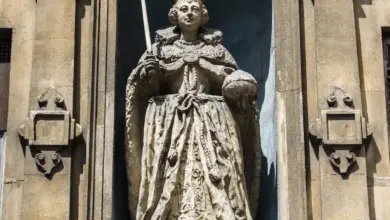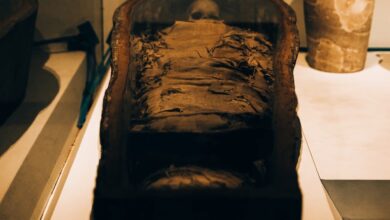History Of Alcatraz – Alcatraz derives from “Alcatraces” in Spanish. The Spanish explorer Juan Manuel de Ayala, who was the first person to enter what is now San Francisco Bay in 1775, named one of three islands Alcatraces. Alcatraz was the anglicized name of the island over time. Alcatraz, while the exact meaning of which is still being debated, is generally defined as “pelican,” or “strange birds.”
Alcatraz Prison Early Years
The Spanish-American War fueled the growth of the prison population on the island from 1898. It was designated an official military jail in 1907. In 1912, Alcatraz was equipped with 600 cells, a hospital, and a mess hall.
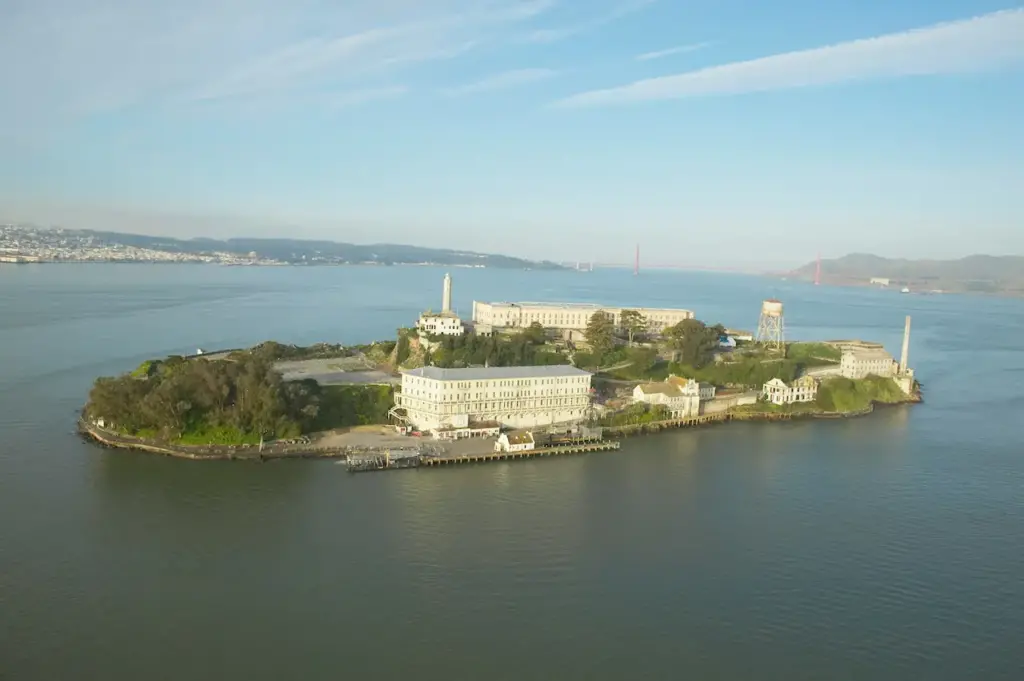
Alcatrez Prison life
Al Capone, George ‘Machine Gun’ Kelly, Alvin Karpis, the first “Public Enemy #1”, and Arthur “Doc ” Barker were all incarcerated on Alcatraz. However, the majority of prisoners were prisoners who did not conform to rules and regulations in other Federal institutions. They were also prisoners who were violent, dangerous or considered escape risks.
Alcatraz never reached its maximum capacity of 336 (at any time, Alcatraz only held less than 1% of the entire Federal prison population). Alcatraz’s living conditions, such as the fact that there was always only one person per cell, were considered by many prisoners to be superior to other Federal prisons. Several inmates even requested to transfer to Alcatraz. USP Alcatraz, while not “America’s Devil’s Island”, as many books and movies portray it, was built to be the prison of a prison system.
A man who did not behave well in another institution could be sent to Alcatraz. The highly structured and monotonous daily routines were designed to teach the inmate how to obey rules and regulations. A prisoner at Alcatraz had four rights. They were: food, clothing and shelter. All other privileges were earned. Prisoners could earn privileges such as working, having family members visit and correspond with them, using the prison library and engaging in recreational activities like painting or music. Prison officials could transfer a man to another Federal prison for him to complete his sentence once they felt that he no longer posed any threat to the prison and was able to follow rules. This usually happened after a period of about five years in Alcatraz.
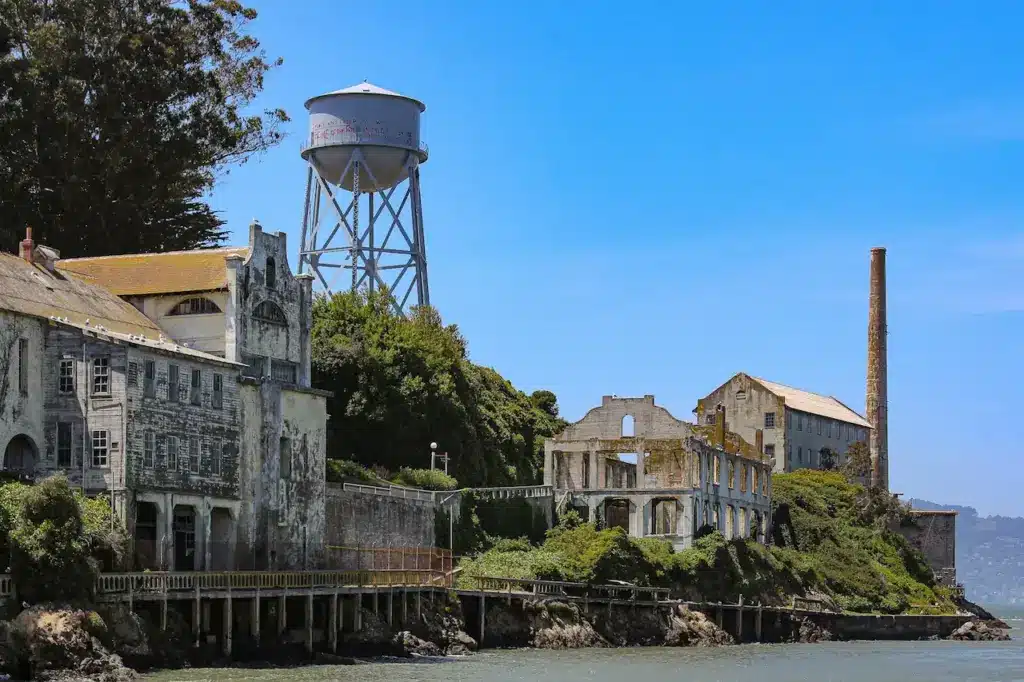
European Colonization
Juan Manuel de Ayala was a Spanish naval officer, who was charting the California coast in 1775. He entered San Francisco Bay. The island was named La Isla de las Alcatraces because it was covered with large pelicans. He mistakenly thought that they were Northern Gannets ( Alcatrace in Spanish). In just one year, Franciscan missionaries from the mainland arrived in San Francisco, setting up Mission Dolores, and a presidio (military outpost), on the edge of the bay.
The American Fortress
Alcatraz Island became a military outpost to guard the entrance to the Bay from invasion. Its strategic location, facing the open ocean, made it a perfect place to do so. In 1848, the United States captured the island during the Mexican-American War. By 1859, extensive construction and fortification had made Alcatraz the most powerful fortress west the Mississippi. Alcatraz was also home to the first lighthouse on the west coast.
Alcatraz, even before it was officially a prison for the U.S. Military, was used to house prisoners due to the strong currents and ice-cold water surrounding it. This made it virtually impossible for the prisoners to escape. Confederate sympathizers during the Civil War were sent to Alcatraz. In 1895, Native Americans were sent to Alcatraz, including Hopis from Arizona. They were there for refusing to comply with the U.S. government’s land laws and educational programs.
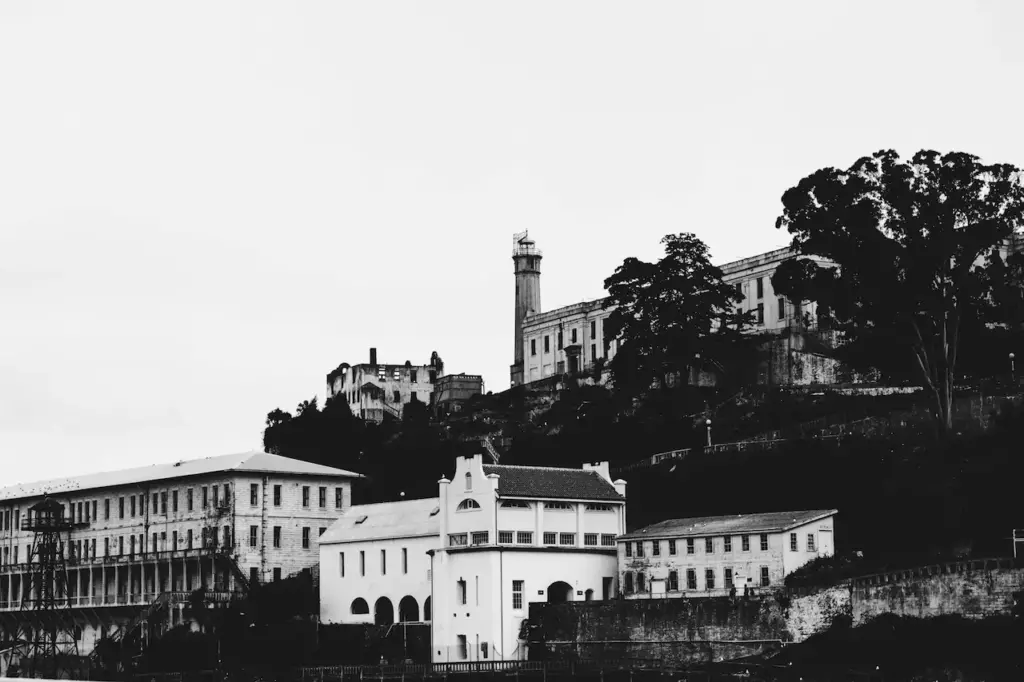
Alcatraz Prison: Gangster Days
Alcatraz Island was taken over by the U.S. Department of Justice in 1933 and became the country’s most secure maximum security prison. It was originally built to house America’s “incorrigible criminals” but it has been retrofitted for even greater security. The prison had three guards on duty per every three prisoners, and each prisoner was in their own cell.
Alcatraz’s creation as a maximum security prison is largely due to prohibition. The United States saw a wave of organized crime after prohibition was outlawed in 1920.
Al “Scarface Capone” was perhaps the most famous resident of Alcatraz. He served four years in Georgia after wardens discovered he continued to run his Chicago crime ring out of his Georgia prison cell. George “Machine Gun” Kelley was another famous Prohibition Era criminal who served 17 years in Alcatraz for kidnapping. Alvin “Creepy Karpis Karpowicz” Karpowicz, a gangster who was listed by the FBI as “Public Enemy Number One”, served at Alcatraz for 25 years, which is more than any other prisoner.
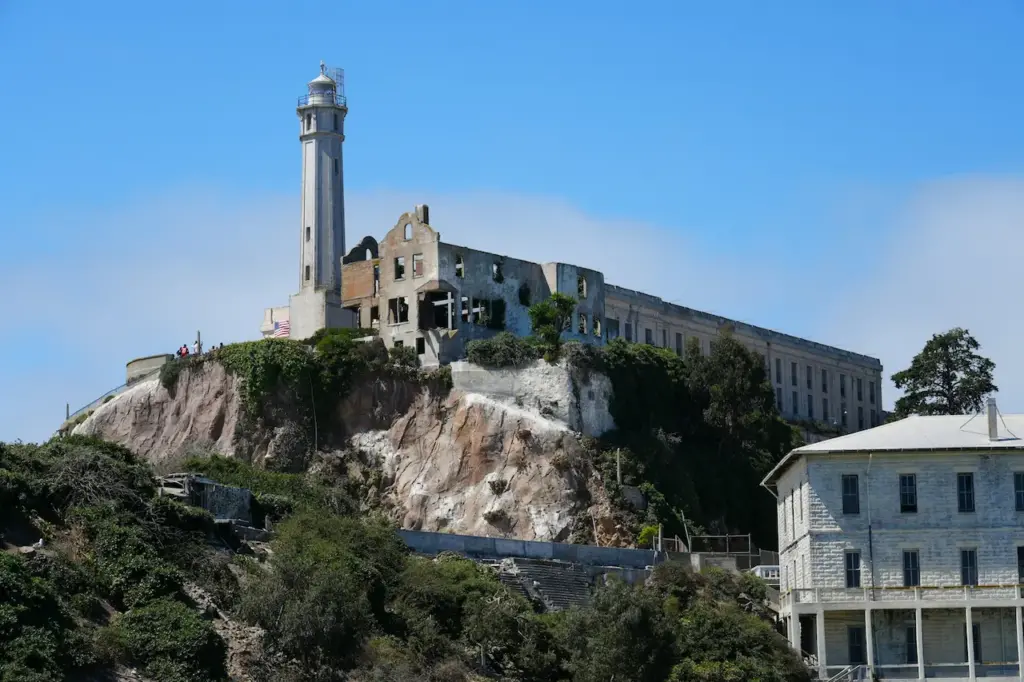
The Birdman of Alcatraz
Robert “The Birdman” Stroud is the most interesting Alcatraz alumnus. Stroud, a self-taught bird expert who studied and kept birds at Leavenworth Penitentiary during his stay there, was sent to Alcatraz for stabbing and killing a prison guard. Stroud was both diagnosed as a genius and psychopath. He wrote books on ornithology and discovered a cure for an avian hemorrhaging disorder while in prison.
Battle of Alcatraz
Residents of San Francisco gathered along the waterfront on May 2, 1942 to view smoke rising from Alcatraz Island. The group of prisoners led by bank robber Bernard Coy had broken into the gun gallery. Armed with guns and armed to set other prisoners free, the group took hostages and demanded that a boat be sent to take them off of the island. Soon, the rebellion turned into a shooting and the military came to assist the police and guards. Coy’s gang set fire to the cell block they had taken.
After three of the ringleaders were killed, the prisoners gave up their fight. Two guards died and 14 others were injured. The 48-hour siege was dubbed the “Battle of Alcatraz”. It has been depicted by several movies, including the TV miniseries Alcatraz: The Whole Shocking Story”, told from the perspective of Clarence Carnes. He is one of the main instigators of this escape attempt.
A presidential order in 1850 set aside the island as a possible United States military reserve. In the early 1850s, the U.S. Army built a Citadel (or fortress) on the top of Alcatraz Island. The California Gold Rush and San Francisco’s growth boom, as well as the need to defend San Francisco Bay, led to this decision. Alcatraz is the most heavily-fortified military site in the West Coast. The Army planned to install over 100 cannons. Alcatraz, Fort Point, and Lime Point formed a “triangle of defence” to guard the entrance to the Bay. Alcatraz was the site of America’s first operating lighthouse, located on the West Coast.
In the late 1850s the island began to house military prisoners. Alcatraz’s defensive importance diminished with time, but its use as a prison continued for over 100 years. In 1909 the Army demolished the Citadel and used its basement to build a new prison. The military prisoners of Alcatraz constructed the new prison from 1909 to 1911. It was named the Pacific Branch U.S. Disciplinary Barracks, for the U.S. Army. This prison became known as “The Rock.”
The U.S. Army occupied the island from 1850 to 1933. In that year, the island was given to the U.S. Department of Justice and the Federal Bureau of Prisons. The Federal Government decided to build a minimum-privilege, maximum-security penitentiary in order to house the most incorrigible offenders in Federal prisons. It also wanted to show law-abiding citizens that it was serious about reducing the crime rate in the 1920s.

Escape Attempts
How Many Alcatrez Escape Attempts Were There?
There were 14 escape attempts. Many ended up with people missing, killed or failed.
1936
April 27 1936 While doing his job at the incinerator burning trash, Joe Bowers started climbing up the chain-link fence on the island edge. Bowers refused to return to the West Road guard tower after being ordered to do so. He was then shot by the correctional officer in the tower and fell 50-100 feet down to the beach below. He died of his injuries.
1937
16 December 1937 Theodore Cole, Ralph Roe and their colleagues worked in the Mat Shop in the Model Industries Building. They worked in the model industries’ building in the mat shop for a while, and eventually climbed through the flat iron bars of a window. They climbed through the window and then made their way to the edge of the bay. The attempt was made during a storm, and the Bay currents were particularly strong and fast. Most people think that Roe and Cole ended up in the sea. They are officially listed as missing and presumed to be dead.
1938
May 23, 38 While working in the woodworking workshop in the Model Industries building, James Limerick and Jimmy Lucas attacked an unarmed correctional officers Royal Cline (Cline was killed by his injuries). The three climbed up to the roof to try to disarm the officer on the roof tower. Harold Stites shot Limerick, and Franklin. Limerick died of his injuries. Lucas and Franklin were sentenced to life imprisonment for Cline’s death.
1939
13 January 1939 Arthur “Doc”, Barker, Dale Stamphill and William Martin, Henry Young and Rufus McCain, escaped the isolation unit by sawing the flat iron bars of the cell and bending the tool-proof bars in a window. The men then made their escape to the edge of the water. Correctional officers located the men on the west coast of the island. Martin, Young and McCain surrendered. Barker and Stamphill, however, were shot after they refused to surrender. Barker died of his injuries.
1941
May 21 1941 – Joe Cretzer (who later became Alcatraz’s third warden), Sam Shockley (who was also a correctional officer), Arnold Kyle and Lloyd Barkdoll held several correctional officers as hostages while they were working in the industries section. Paul Madigan, who would later become Alcatraz’s third warden, convinced the four men that they couldn’t escape. They surrendered.
1941
15 September 1941 John Bayless, while on garbage duty, tried to escape. After he entered the cold waters of San Francisco Bay, he gave up. Bayless then tried to escape the Federal Court in San Francisco.
1943
14 April 1943 James Boarman took two officers as hostages while working in the industries section. The four men climbed down from a window to reach the water. The hostage was able alert the other officers about the escape. Shots were fired on Boarman and Brest as they swam away from the island. Hunter and Brest both were apprehended. Boarman, who was shot by officers and submerged in the water before they could reach him, was never found. Hamilton was first presumed to have drowned. Hamilton was initially presumed drowned.
1943
August 7 1943 — Huron ‘Ted’ Walters vanished from the prison laundry. He was stopped at the shoreline before he even tried to enter San Francisco Bay.
1945
July 31 1945 – In one of his most brilliant attempts, John Giles took advantage of working at a loading dock where he was unloading army laundry that had been sent to an island to be cleaned. Over time, John Giles stole a complete army uniform. Giles, dressed in his uniform, calmly walked onto an army launch and thought he was free. He was found missing almost instantly. Giles was disappointed to learn that the launch was heading for Angel Island and not San Francisco, as he had hoped. Giles was returned to Alcatraz by correctional officers as soon as he stepped foot on Angel Island.
1946
May 2 – 4, 1946 During the Alcatraz Blastout, six prisoners overpowered cellhouse officers, gained access to weapons, and took control of the cells. The plan fell apart when they realized that they didn’t have the key for the recreation yard. Prison officials soon discovered the attempt to escape. Bernard Coy and his fellow prisoners Joe Cretzer Marvin Hubbard Sam Shockley Miran Thompson Clarence Carnes, Clarence Carnes, Miran Thomson, and Clarence Carnes, decided not to give up. Cretzer, with the encouragement of Shockley and Thompson, shot at point blank range, the officers who were being held hostage. William Miller died of his injuries. Harold Stites, a second officer (who had stopped the third attempt to escape) was killed by a gunshot while attempting regain control over the cellhouse. During the escape attempt, 18 officers were hurt. On May 4, the U.S. Marines arrived to help, and the attempt to escape ended when the bodies of Coy Cretzer and Hubbard were discovered. Shockley Thompson and Carnes were tried for the deaths of the officers. Shockley received the death sentence and was executed in the San Quentin gas chamber in December 1948. Carnes, aged 19, was sentenced to a second term of life imprisonment.
1956
Floyd Wilson vanished from his dock job on July 23, 1956. He was found after hiding among rocks on the shoreline for several hours.
1958
29 September 1958 Aaron Burgett, Clyde Johnson and a garbage man overpowered an officer of correction and tried to swim away from the island. Johnson was snared in the water but Burgett vanished. A thorough search revealed nothing. Two weeks later, Burgett’s corpse was discovered floating in the Bay.
1962
June 11 1962 — As made famous by Clint Eastwood’s movie Escape from Alcatraz Frank Morris, brothers John and Clarence Anglin and their cell disappeared and they were never seen again. Allen West was believed to be the mastermind by some, but he was in his cell when the escape was discovered the following morning. Investigation revealed a complex escape plan that included homemade drills for enlarging vent holes, fake wall segments and realistic dummy head (complete with hair) placed on the beds to ensure the inmates were not missed when nighttime counts took place. Three men escaped through vents in the cell’s rear wall. They had enlarged these vents and constructed false vent/wall sections to hide their work. The utility corridor behind the rear wall has steel doors on either end. The three men climbed up the utility pipes and reached the top of cellblock. They then gained access to roof via an air vent. (The men had bent the iron bars blocking the air vent. The men then descended a drainpipe at the northern end the cellhouse to reach the water. It is believed they left from the northeast side of the island near the powerhouse/quartermaster building. The inmates used raincoats from prison to make crude life jackets and a pontoon raft for their swim. The drills, heads and wall segments were found in the cellhouse, while two life vests belonging to the Anglins were discovered on the water. No sign of these men was ever found. A few weeks later, the body of a man dressed in blue clothing, similar to prison uniforms, was discovered a short distance from San Francisco. However, the body had become too deteriorated for identification. Morris and Anglins have been officially declared missing, and are presumed to be drowned.
1962
16 December 1962 John Paul Scott, Darl Parker, and their friend Darl Parker bent a window bar in the basement of the cellhouse, climbed up, and then made their way to the water. Parker was found on a small rock outcrop near the island. Scott tried to swim to San Francisco but was pulled out to sea by the currents. He was discovered by several teens on the rocks below the Golden Gate Bridge. Scott was then taken to the Presidio Army Base Military Hospital suffering from hypothermia and shock.
29 Years Of Alcatrez Prison Operations
During the 29-year period (1934-1963), the Federal Prison operated, 36 men were involved in 14 different escape attempts (including two that tried to escape more than once). Two men drowned, six were killed by gunfire during their escape and 23 were captured. Two of those who were captured were executed in the gas-chamber at the California State Prison in San Quentin, for their involvement in the death of an officer of correction during the famous “Battle of Alcatraz”, May 2-4 1946.
The definition of “successful” escape will determine whether or not someone has escaped from Alcatraz. What is considered a successful escape? Is it escaping the cellhouse and reaching land or making it across the water to the land without being caught? Officially, nobody has ever escaped from Alcatraz. However, there are still five prisoners who have been listed as “missing presumed drowned.”
Sharks are one of many myths surrounding Alcatraz. It is impossible to swim from the island back to the mainland. San Francisco Bay is home to small sharks that feed on the bottom. The cold temperatures (average 50-55 degrees Fahrenheit), strong currents and distance from shore (at least 1-1/2 miles) were the main obstacles. Before the Federal Institution opened in 1934, an 18-year-old girl made the swim to the island. Jack LaLanne, a fitness guru, once swam the island towing a rowboat. Two 10-year-olds also did the swim a few years ago.
It is possible for a well-trained person to survive cold water and strong currents. Prisoners, who were not in control of their diets, did no weightlifting, and had no physical training other than pushups and situps, and knew nothing about high and low tides, had slim chances for survival.
